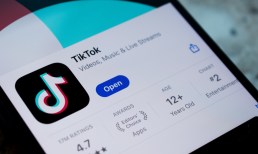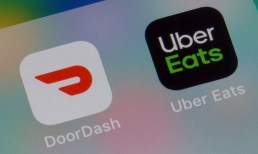Flourish Ventures: Embedded Finance Paves The Road To The Super App
We’re in the midst of a sea change in the connected economy. The shift is underway from apps to ecosystems, with a single digital front door as point of access. The app, then, gives rise to the super app, which lets consumers plan, manage, spend and click their way through everyday tasks spanning money management, commerce, even getting something to eat while hailing a ride.
It’s all part of a series of first steps on a digital journey that differs from firm to firm as they create platforms that eventually bring together people from around the globe.
No more hopscotching between apps, then — to the benefit of consumers and small and medium-sized businesses (SMBs), yes, but also the firms that serve them and endeavor to create sticky relationships. In the latest installment of an ongoing series on the connected economy, Emmalyn Shaw, managing partner at investment firm Flourish Ventures (where the portfolio of companies includes Chime and Propel, among several others), told Karen Webster that there’s no straight line or simple template to get to the super app. As she noted, PayPal’s starting point and progress has been markedly different than Grab’s, which has been different than Google’s.
With a nod to what ties those and other firms together in pursuit of the end-to-end digital journey, she said, “the global trend that we are moving toward is around embedded finance.” She noted that financial services have increasingly become a feature of non-traditional platforms as they seek to build retention and lifetime value of the consumer relationship, across channels, of course.
Payments are fast becoming one of the ubiquitous layers of commerce and interactions that ultimately drive business. Along the way they enable companies to understand consumer behavior in a deep (and real-time) way.
She pointed to WeChat and other companies in China, where the evolution has always been mobile first, where connectivity enabled messaging, and online communities took shape. WeChat, she said, quickly figured out the transactional element that would make those communities sticky, in part by offering QR codes.
“The defining factor was when they added in the wallet,” she said, merging messaging with finance, and eventually creating what might be called “social money.”
To be sure, the ubiquitous layer need not start with finance (though it leads in that direction), Shaw was quick to point out. One need only look at Google to see that, with its dominance in search, or Walmart’s position in brick-and-mortar retail to find evidence of the ‘ubiquitous wedge” that brings consumers and SMBs to other adjacent, ancillary services. Search, she said, had existed long before Google, but Google did it better than peers and added ads and email before, eventually, moving to shopping and to payments (and most recently, through Google Play, banking). Walmart has seen its eCommerce initiative explode and has been staking a position in healthcare.
Want more examples? Grab’s starting point, of course, was ride-hailing (as was Uber’s), but adding wallets into the mix has become the glue connecting the various points of contact within the ecosystems as they emerge. Amazon, she said, a marquee eCommerce name, has been striving to cement its own physical presence in brick-and-mortar.
Asking The Right Questions
As the firms seek to scale those interactions and transactions, she said, the platforms must ask themselves key questions — constantly.
“What are the unique products and services that otherwise in the absence of a platform you wouldn’t get, what are the better pricings and products?” she asked.
Those are among the most immediate and crucial benefits that accrue to the end users; the companies themselves get access to underlying data that can help them craft new, customized, even hyper-targeted offerings. The platforms must be flexible enough, she said, so that people can develop new offerings on top of them in a bid to serve the end user — an open ecosystem, she said, that can give rise to mini-apps.
Forward-thinking, digital-first firms, she said, need not strive to own everything in the ecosystem — they can choose instead to forge partnerships with other providers. Walmart, she said, has benefitted from the evolution of a “closed garden,” but she cautioned the infrastructure must remain open so that ecosystems can embrace the innovation that’s required to benefit end users.
Data’s Role
Data, of course, plays an important role in making those connections and building competitive moats.
“Understanding data and insights and being able to identify what the natural path is for that [super app] evolution and then monetizing that and creating different business models on top of that can be extremely powerful and defensible,” said Shaw. “If you have an unusual or unique business model, that’s very hard for others who don’t have it to try to replicate. It’s incredibly sticky, and the switching costs are high for the consumer or [SMB].”
She cautioned that there can be downside, too, if these same companies are not vigilant about protecting privacy data protection.
With a nod to Flourish’s own principles, Shaw said, “we believe fundamentally that there is this concept of fair finance. We do want consumers to be better off in these kinds of solutions. We want them to feel like there’s transparency and trust in these platforms. We want regulation to be forward-thinking and really being embracing technology as it is evolving.” Public-private partners are critical, she said.
Thinking Big
As a guiding philosophy, the problems and frictions the platforms seek to address must be large enough to bring consumers and companies alike to the table to create new ecosystems. Among the burgeoning problems that we’ll face on the other side of the pandemic, she said, ties in with the need to reskill — and specifically, upskill — workers. We’re moving into a new world of data and automation and there is going to be a massive displacement of jobs and skills, she predicted.
“I think we’re going to see a massive shift toward leveraging technology and online courses across a series of sectors, some of which we may not even know at this point. It will be a combination of marketplaces where you’ve got demand, you’ve got services and a real need to kind of think about the monetization layer.”
Successful platforms, she said, have been utilizing AB split testing, which enables firms to test separate versions of web pages or app features to see which have optimal conversion rates or UX.
“They’re constantly testing what’s right,” she said, “and they don’t wait until it’s a foregone conclusion that they should be switching or adding services.” And the feedback can come pretty quickly.
As she told Webster, “Technology enables us to do all of this much more thoughtfully and strategically. And I think the ability and the technology shift with FinTech and the enablement layers are creating a lot more easy access for even the smallest startup to start to explore, for example, ‘how do I add lending as a service?’ We’re going to continue to add layers to find the best value for the consumer.”



